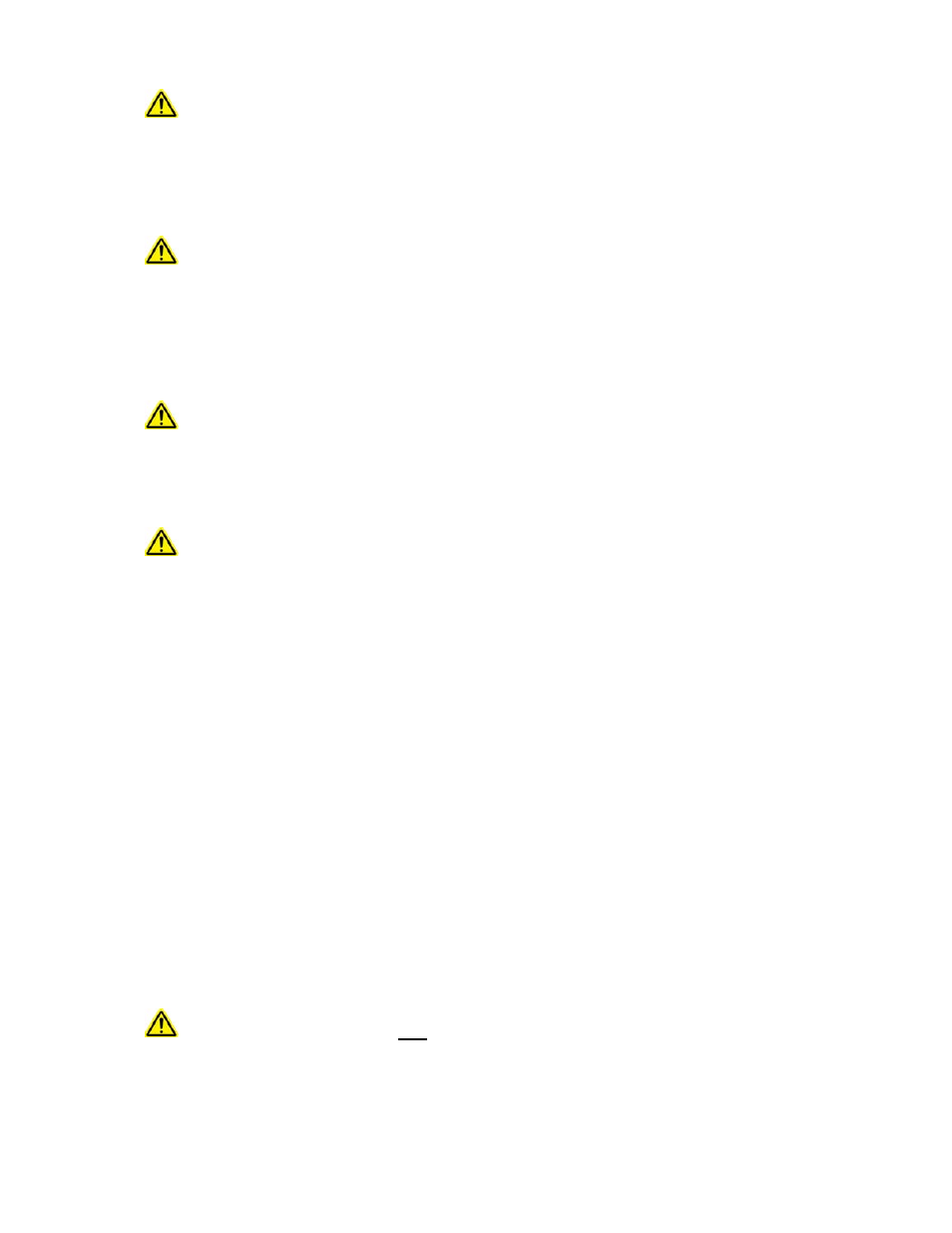TE Technology TC-36-25-RS485 User Manual
Page 16

16
The controller does have an internal 25 A fuse to limit current (Littelfuse PN: 142.6185.5256). This fuse
provides a degree of protection to the controller. If the fuse needs replacing, be sure to compress the fuse
holder tines to ensure the new fuse will have good electrical contact to the fuse holder. In any case, an
external fuse, appropriately sized for protecting the TE device, should be connected between the
controller and the TE device to prevent damage and to prevent injury to the user should an over‐current
condition occur with a TE device rated for less than 30 A. Alternately, a power supply with integral over
current protection can be used if it is appropriately sized for protecting the controller/TE device.
When making a cooling system from a single TE device, the maximum operating voltage for that system is
usually no more than 75% of the rated Vmax of the TE module. The 75% rule is based on the TE module
being thermally connected to a “good” heat sink; system modeling should be done to verify this rule is
applicable though. If multiple TE modules are used in series or series‐parallel combination, the Vmax of
the system will be approximately 75% of the rated Vmax of each TE module multiplied by the number of
modules in series. Applying a voltage greater than the system maximum will not necessarily damage the
controller (unless voltage and/or current limits are exceeded), but the TE device could be damaged by
overheating as a result.
Power supply and TE Device wire leads should be kept as short as possible to minimize electrical losses
and reduce the likelihood of generating unwanted electromagnetic interference. Wire length must not
exceed one meter. Use wires of a sufficient gage appropriate to the amount of electrical energy each wire
is to carry. Wire insulation and size must also be appropriate to the ambient temperature and/or
temperature of objects in contact with the wire. Wire leads supplied by TE Technology are for prototyping
purposes and should be reviewed for appropriateness in the final application
Use protection devices to prevent hazardous conditions and/or damage to the load (e.g. cooling
assembly, heater, et cetera) and other related equipment. Protection devices must operate
independently of the temperature controller circuitry. Protection devices should be placed at all points
on the load and related equipment where a hazardous condition can be detected. These protection
devices should de‐energize the TC‐36‐25 RS485, the load, and, as necessary, other related secondary
equipment. It is further recommended that such devices require the user to remove and correct the root
cause of a fault before allowing the TC‐36‐25 RS485, the load, and related equipment to be re‐energized.
Protection devices should include, but are not limited to:
Fuses to prevent against electrical overloads,
Over/under temperature thermostats to prevent against hazardous and/or damaging temperatures,
Liquid flow meters to prevent against damage due to loss of coolant flow
The TC‐36‐25 RS485 controller (in conjunction with the standard and optional sensors) can detect under‐
temperature and over‐temperature conditions as well as over‐current conditions, and it can be configured
to de‐energize the load when such conditions are detected. However, hazards and/or risk of loss or
damage to the load (e.g. cooling assembly, heater, etcetera), and/or secondary equipment could still
occur if the temperature controller and/or sensors were to malfunction. Therefore, independent,
redundant protection devices are recommended in addition to the safeguards provided by the
temperature controller. For the purposes of this manual the temperature controller and sensors are not
considered protection devices.
1.4.1 One Power Supply Operation:
Make sure the power supply is NOT energized while making electrical connections to the controller.
a) Install jumper across JP6‐1 and JP6‐2 (default setup)
b) Connect the constant DC voltage power supply (12 to 36) V to the controller:
Positive power supply terminal to WP3
Negative power supply terminal to WP4
c) Do NOT connect the TE device to the controller at this time.
